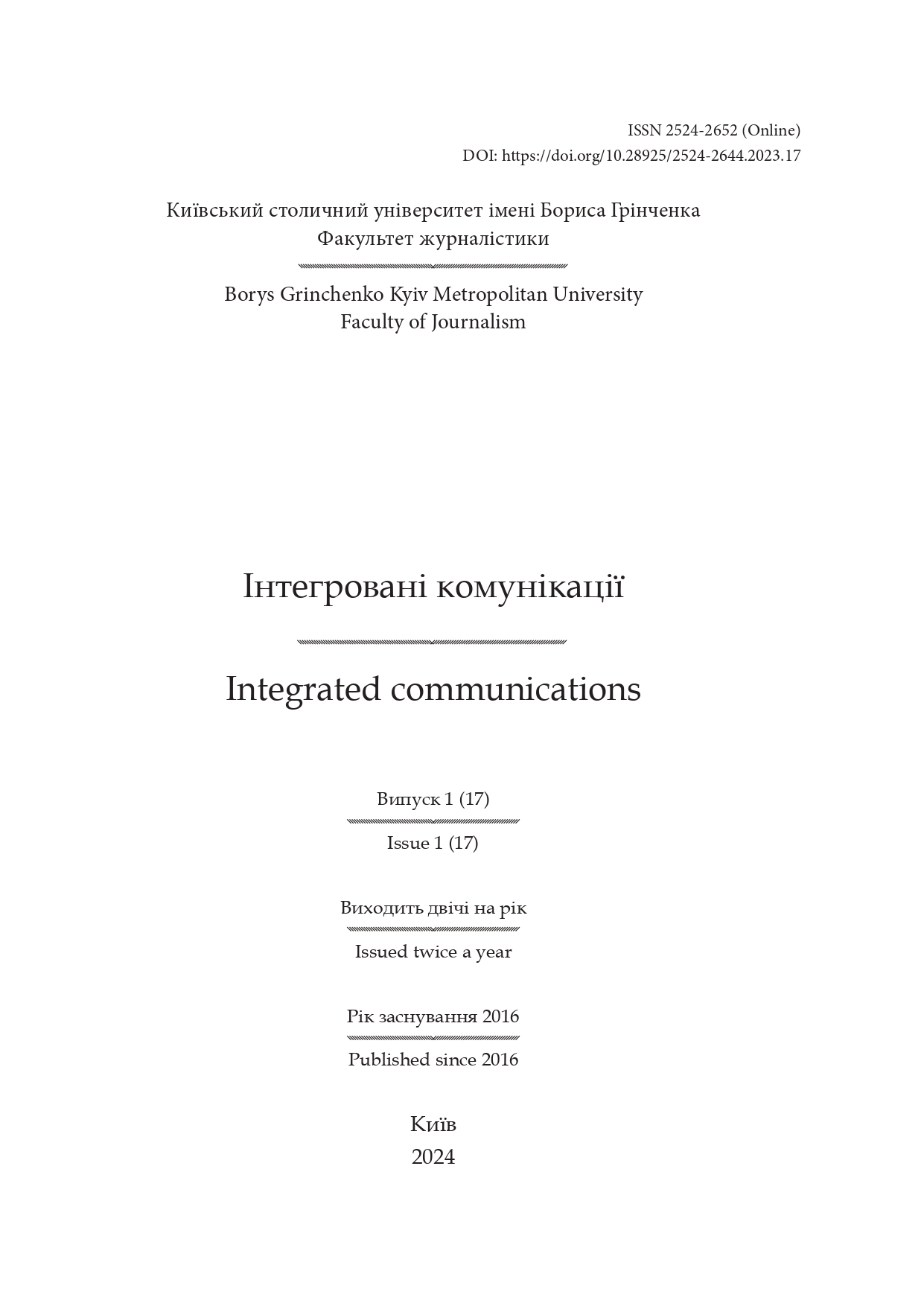INTERFERENCE OF FOREIGN LANGUAGE LEXEMES IN THE UKRAINIAN HUMOROUS DISCOURSE DURING THE FULL-SCALE INVASION
Abstract
The article highlights the cognitive and linguistic aspects of Ukrainian humorous discourse during the full-scale Russian invasion, focusing on the process of interference of words of foreign origin. Particular attention is paid to lexemes and their reinterpretation through cognitive patterns, such as availability heuristics, negative thinking, the accessibility cascade, the friend-foe pattern, the effect of contrast and stereotypical expectations. The study reveals a variety of stylistic means of comism that are caused by the interference of words of foreign origin in humorous Ukrainian discourse. The main techniques are irony, allusion, comic innuendo, parallelism, paradox, hyperbole, baphos, gradation, metaphor, and rhetorical figures. These stylistic elements of humor play an important role in creating a comic effect and shaping a humorous statement in wartime. The determined communicative functions of Ukrainian humor fragments relate to maintaining an optimistic moral state, promoting the unanimity of the Ukrainian people in the difficult circumstances of the war, creating a negative image of the enemy, and relieving psychological stress that occurs in people during hostilities, air raids, and shelling.
The sample has three American tokens, three English tokens, two German tokens, and one Turkish token, which is duplicated in two jokes. All of them are reinterpreted and receive additional meanings and connotations.
Ukrainian humorous discourse during the full-scale Russian invasion of Ukraine is based on topics relevant to the country: political, military, cultural-historical, and social. The systematized use of borrowed words in modern jokes can be seen, and it concerns the current realities of Ukrainians. Humor itself is built on situational circumstances, military aspects, and their consequences for society. The interference of foreign-language lexemes leads to the acquisition of specific words and phrases with new and ambiguous lexical and semantic meanings. Most of the sample, which refers to the military aid of Western countries, interprets the borrowed words in a positive sense; the other part, which concerns Russian realities, gives the constructions negative comic and ironic-humorous meanings.
Downloads
References
Samokhina, V . A. (2012). Suchasny`j anglomovny`j zhart. Monografiya [A modern English joke]. Monograph. Kharkiv: V. I. Karazin Kharkiv National University, 475 p.
Kharchenko, O. V. (2023). Interference of Russian cultural realities and tokens in Ukrainian humorous discourse during the war. Scientific notes of the Tavri National University named after V. I. Vernadskyi: Series «Philology. Social communications», vol. 33 (73). No. 5. «Helvetica» Publishing House, pp. 232–237. Avaible at: https://philol.vernadskyjournals.in.ua/journals/2023/5_2023/38.pdf (accessed 18.11.2023).
Adams, P. A., & Adams, J. K. (1960). Confidence in the recognition and reproduction of words difficult to spell. The American Journal of Psychology, vol.73(4), pp. 544–552.
Attardo, S., Raskin, V. (1991).Script Theory Revisited: Joke Similarity and Joke Representation Model. Humor: International Journal of Humor Research, vol. 4, pp. 293–347.
Brisbane, A. (2024). Top 15 Arthur Brisbane quotes. Avaible at: https://quotefancy.com/arthur-brisbane-quotes (accessed 18.11.2023).
Cherry, K. (2023).What Is Cognitive Psychology? accessed https://www.verywellmind.com/cognitive-psychology-4157181 (accessed 18.11.2023).
Dougherty, M. R. P.; Gettys, C. F.; Ogden, E. E. (1999). MINERVA-DM: A memory processes model for judgments of likelihood
Goldman, N. (2013). Comedy and democracy: The role of humor in social justice. Animating Democracy, pp. 1–10.
Grover, S. (2023).7 Congnitive Biases You can Exploit to Create More Memorable Content. Avaible at: https://www.adpushup.com/blog/cognitive-biases-content-memorable/ (accessed 19.11.2023).
Gerlach, A. (2023). Humor Effect: The Benefits of using humor. Avaible at: https://neurofied.com/humor-effect-the-benefits-of-using-humor (accessed 19.11.2023).
Frothingham S., Legg, T. J. (2019). What Is Negativity Bias, and How Does It Affect You? December 16, 2019. Avaible at: https://www.healthline.com/health/negativity-bias (accessed 19.11.2023).
Judith, S. B. (2020). Cognitive behavior therapy: Basics and Beyond. The Guilford Press. 413 p.
Kahneman, D. A., Tversky, A. (1974) Judgment Under Uncertainty: Heuristics and Biases. Science, New Series, vol. 185, No 4157. (Sep. 27, 1974), pp. 1124–1131.
Kharchenko, O. V. (2023). The ‘Availability Heuristic’ Cognitive Pattern in the War-time Ukrainian Humorous Discourse. Periodyk Naukowy Akademii Polonijnej (PNAP), vol. 56, No 1, 2023, pp. 81–91. Avaible at: http://pnap.ap.edu.pl/index.php/pnap/article/view/1041/992 (accessed 22.11.2023).
Paivio, A. (1971). Imagery and verbal processes. N. Y.: Holt, Rinehart & Winston, 1971. 312 p.
Von Restorff, H. (1933). Über die Wirkung von Bereichsbildungen im Spurenfeld (The effects of field formation in the trace field). Psychologie Forschung, vol. 18, 299 p. Avaible at: http://en.wikipedia.org/wiki/Von_Restorff_effect» (accessed 11.11.2023).




